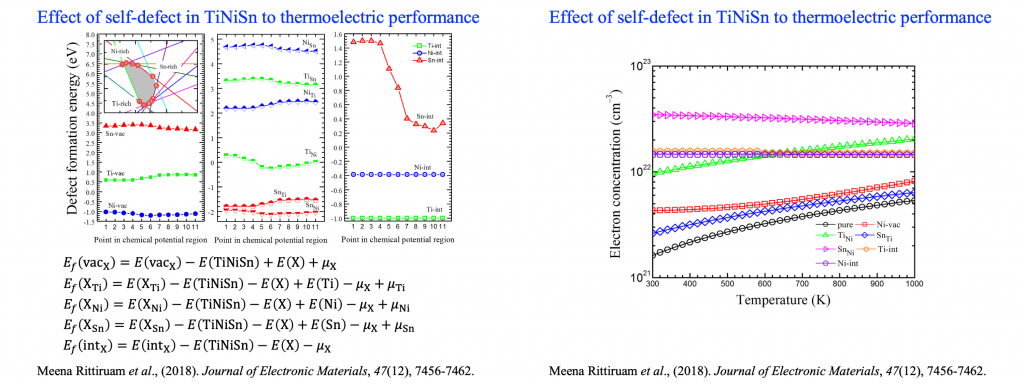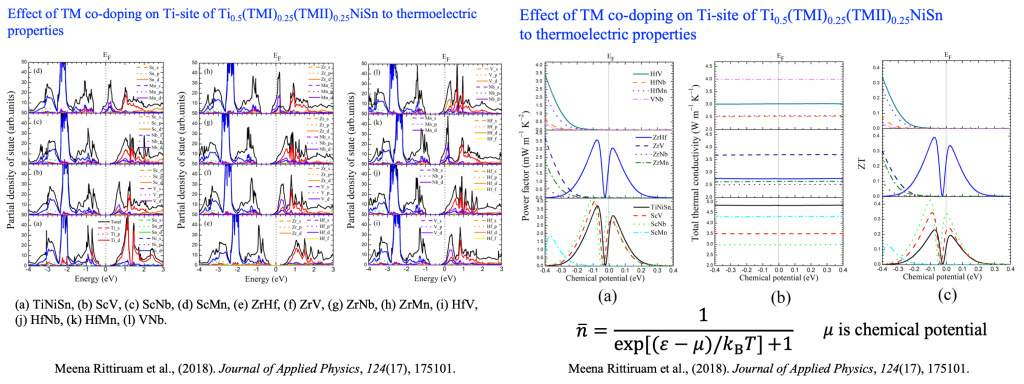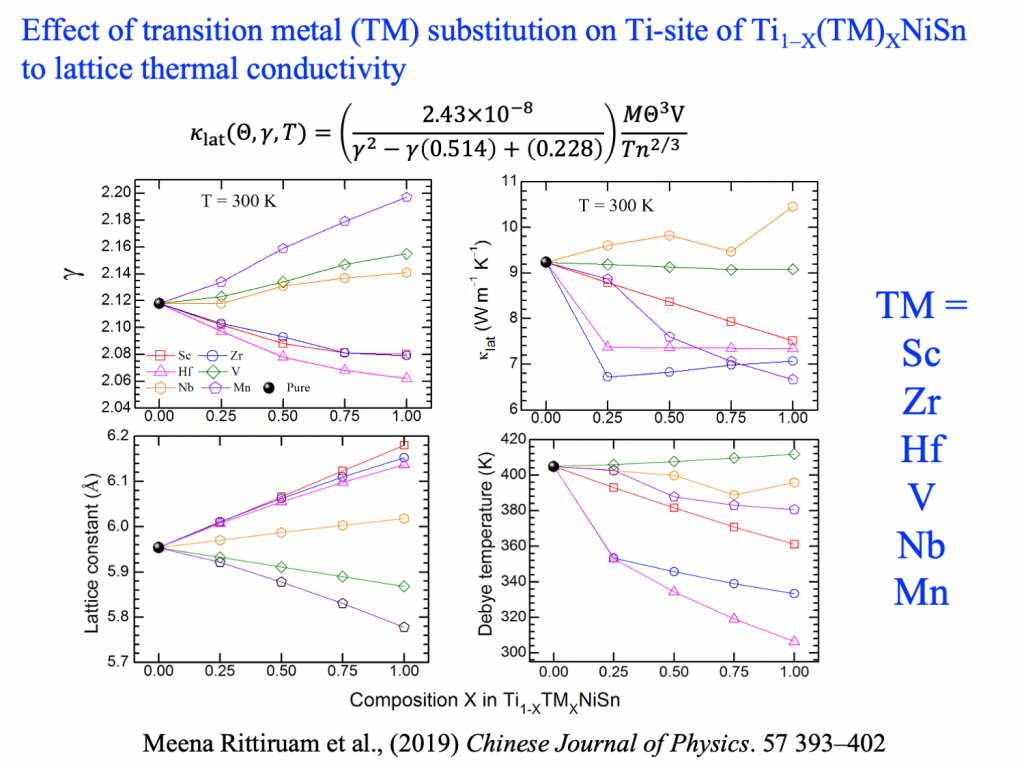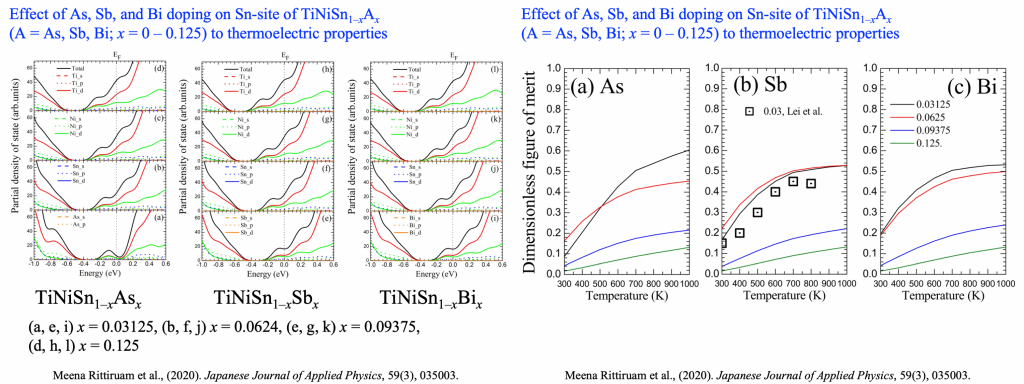 |
 |
 |
| M. Rittiruam | T. Seetawan | A. Yangthaisong |
Density Functional Theory–based Calculation on Thermoelectric Properties of Ti–Ni–Sn half Heusler Alloys
This research was successfully carried out by Meena Rittiruam under advisors, Assoc. Prof. Dr. Tosawat Seetawan and Assoc. Prof. Dr. Anucha Yangthaisong, within the Royal Golden Jubilee (RGJ) Ph.D. Program (RGJ_18). His dissertation topic is “Investigation of electronic structure and thermoelectric properties of Ti-Ni-Sn half Heusler alloys by density functional theory.” He received a Ph.D. of Physics from Sakon Nakon Rajabhat University in 2020 with his ISI publication more than 4 papers (Jpn. J. Appl. Phys. 59, 035003-7., Chinese J. Phys. 57, 393–402., J. Elect. Mater. 47, 7456–7462., and J. Appl. Phys. 124, 175101). Now, he works as Postdoctoral Researcher at High-performance Computing Research Unit (CECC-HCU), Center of Excellence on Catalysis and Catalytic Reaction Engineering (CECC), Chulalongkorn University, Bangkok, Thailand. In this highlighted research, he studied the the electronic structure and thermoelectric properties of TiNiSn half Heusler alloy–based through the density functional theory–based calculation, in which the technical calculations composing the self-defect as a formation energy and rich-poor chemical condition, quasi-harmonic Debye model, Boltzmann transport equation, and phonon dispersion as the density functional perturbation theory were contributed to the thermoelectric properties. The highlighted results are (1) the self-defect TiNiSn gives possible increasing the electron concentration, (2) doping and co-doping on the Ti-site TiNiSn by transition metals also increase the electron concentration and reduce the lattice thermal conductivity enhancing the thermoelectric performance as dimensionless figure of merit (ZT) up to 175%, and (3) doping Sb, Bi and As on Sn-site TiNiSn as dilute concentrations is enough for enhancing the ZT up to 22%.
Full paper:
1) M. Rittiruam et al. (2020) Jpn. J. Appl. Phys. 59, 035003-7.
2) M. Rittiruam et al. (2019) Chinese J. Phys. 57, 393–402.
3) M. Rittiruam et al. (2018) J. Elect. Mater. 47, 7456–7462.




